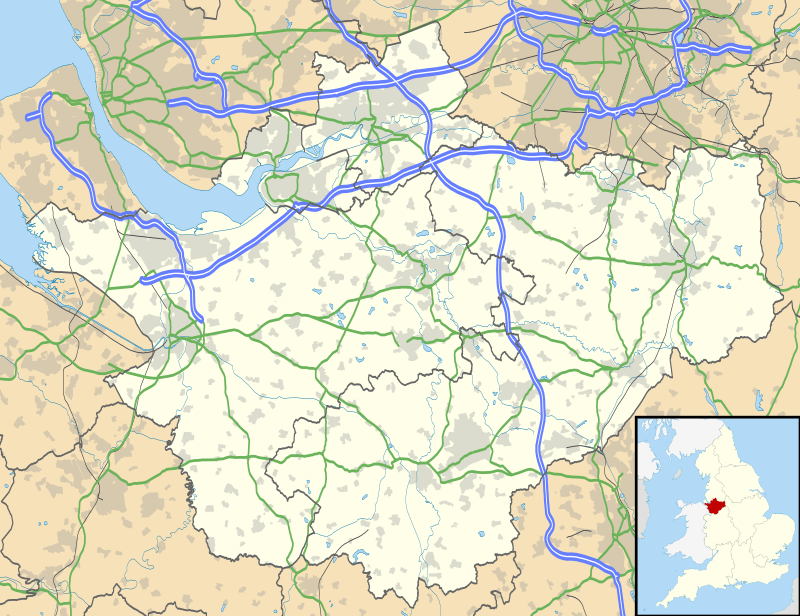Black Lake Nature Reserve
Black Lake is a nature reserve in Delamere Forest, Cheshire, England. It lies in the southwestern corner of the forest, just south of the Manchester–Chester railway.[1] It is managed by the Cheshire Wildlife Trust (CWT)[2] on behalf of the Forestry Commission, and as a Site of Special Scientific Interest (SSSI) is monitored by Natural England.[3]
| Black Lake Nature Reserve | |
|---|---|
 Black Lake NR within Cheshire | |
| Type | Nature reserve and SSSI |
| Location | Delamere Forest, Cheshire |
| OS grid | SJ537709 |
| Coordinates | 53.2333°N 2.6944°W |
| Area | 0.4 ha |
| Elevation | 75m[1] |
| Operated by | Cheshire Wildlife Trust |
| Open | any reasonable time |
The site is designated as an SSSI because "it represents a very early stage of a Schwingmoor type basin fen and occurs in association with dystrophic open water."[4] A Schwingmoor or quaking bog occurs when plants such as Sphagnum mosses and cotton grass Eriophorum sp. colonise the surface of a waterbody and form a floating mat of vegetation; at Black Lake the Sphagnum raft covers around half the lake surface. The SSSI (which includes the surrounding catchment area) covers an area of 1.74 hectares (4.3 acres);[4] the CWT reserve is 0.40 hectares (0.99 acres) in area.[2]
The site is also noted for its uncommon dragonflies, which formerly included the white-faced darter (Leucorrhinia dubia).
History
The depression containing Black Lake was created by the melting of an ice-block at the end of the last Ice Age some 10,000 years ago. The lake was enlarged as a duck pond in the 1820s. By the 1940s it was completely covered by Sphagnum moss, and in 1973 had developed a hummocked appearance and had been colonised by young trees. The building of a crushed-limestone road nearby changed the acidity of the conditions and the moss Sphagnum cuspidatum, which hosted the nymphs of the white-faced darter, disappeared. In 1995 the limestone material was removed, and the raft of vegetation began to recover, but the white-faced darter has not been recorded since 1997.[3]
Key species
The following species of dragonflies and damselflies have been recorded at Black Lake: white-faced darter (Leucorrhinia dubia, last recorded 1997), brown hawker (Aeshna grandis), four-spotted chaser (Libellula quadrimaculata), common darter (Sympetrum striolatum), black darter (Sympetrum danae), large red damselfly (Pyrrhosoma nymphula) and common blue damselfly (Enallagma cyathigerum).[3]
Unusual plants for the area include common sundew (Drosera rotundifolia), white sedge (Carex curta), common cottongrass (Eriophorum angustifolium)[4] and wild cranberry (Vaccinium oxycoccos).[3]
References
- Northwich & Delamere Forest (Map). 1:25000. Explorer Series. Ordnance Survey. Archived from the original on 2016-03-04.
- "Black Lake". Cheshire Wildlife Trust. Retrieved 1 March 2019.
- Interpretative notice on site
- "SSSI citation: Black Lake, Delamere" (PDF). Natural England. Retrieved 21 May 2020.
External links
- Photographs at Geograph: SJ 537 709, SJ 537 708, SJ 538 708